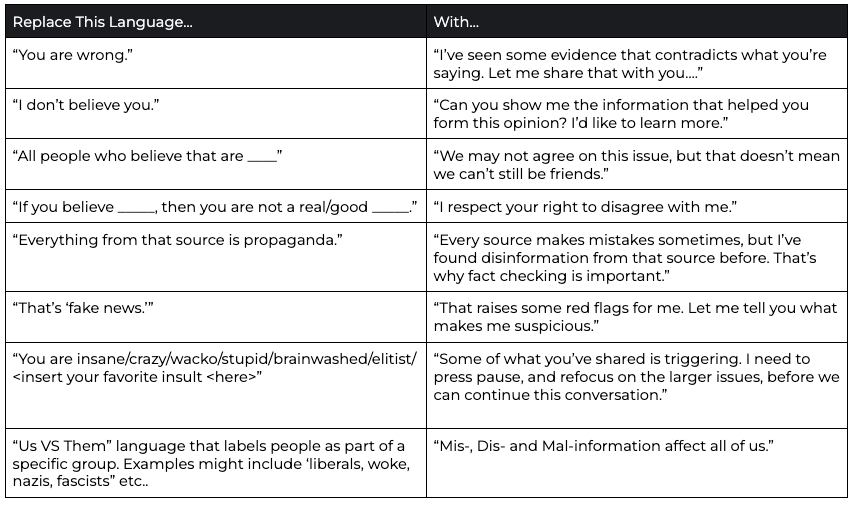Having classroom discussions about challenging topics can sometimes be tricky. Some students do not feel comfortable participating in open discussions for various reasons. This infographic from the eltcation blog briefly describes eight class discussion techniques that can scaffold the discussion process for learners. Try one of these techniques when you discuss current events, various mini-lessons from Developing Digital Detectives or perhaps prompts like this:

In our first book, Fact VS Fiction, we shared tips for helping kids use more productive language when discussing challenging topics. We’ve updated that chart and are sharing it here👇🏼. We know that kids would likely never use the wording we’ve suggested. However, we encourage you to have kids create their alternatives to our suggestions that capture the spirit of productive, healthy debate we were after.




